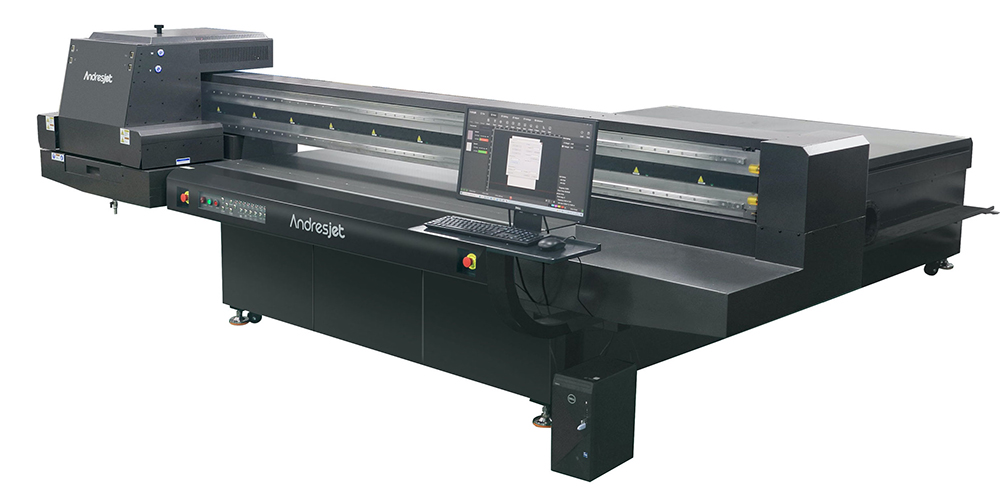UV Flatbed Printer: Understanding the Role of Printer Firmware Updates
UV Flatbed Printer: Understanding the Role of Printer Firmware Updates
In the realm of digital printing technology, UV flatbed printers have emerged as a versatile and efficient solution for producing high-quality prints on various materials. These printers utilize ultraviolet (UV) light to cure ink instantly, enabling them to print on a wide range of substrates, including glass, metal, plastic, and more. The efficiency and versatility of UV flatbed printers are further enhanced by their firmware, which plays a crucial role in controlling and optimizing printer performance. This article delves into the significance of printer firmware updates in UV flatbed printers, exploring how these updates improve functionality, enhance print quality, and address security concerns.

The Essence of Printer Firmware
Printer firmware refers to the embedded software that controls the hardware components of a printing device. It acts as the intermediary between the printer and the computer, interpreting print commands and translating them into actions that the printer can execute. In UV flatbed printers, firmware is particularly critical due to the complex interplay between the UV curing process, ink delivery system, and precision movement of the print head.
Firmware is responsible for regulating various aspects of the printing process, such as ink flow, print speed, curing intensity, and print head movement. It ensures that the printer operates efficiently, maintains consistent print quality, and minimizes errors or malfunctions. Essentially, firmware is the brains behind the printer’s mechanical prowess, dictating how well it performs its tasks.
The Importance of Firmware Updates
Just like any other software, printer firmware is not static. Manufacturers continually release updates to address issues, introduce new features, and improve overall performance. These updates are vital for ensuring that UV flatbed printers remain at the forefront of technological advancements and continue to deliver optimal results.
Bug Fixes and Performance Improvements
Firmware updates often include bug fixes that address issues identified in previous versions. These issues may range from minor glitches that affect print quality to more significant problems that could potentially cause hardware damage. By installing updates, users can prevent such issues and ensure that their printers operate smoothly and efficiently.
Performance improvements are another key aspect of firmware updates. Manufacturers may optimize the firmware to enhance print speed, reduce ink consumption, or improve the accuracy of print head movement. These enhancements directly translate to cost savings and increased productivity for businesses relying on UV flatbed printers.
New Features and Functionalities
Firmware updates can also introduce new features and functionalities to UV flatbed printers. Manufacturers may develop new print modes, such as variable data printing or enhanced color management capabilities, which can be activated through firmware updates. These new features expand the printer’s versatility and enable users to explore new creative avenues in their printing projects.
Security Enhancements
As with any connected device, security is a crucial consideration for UV flatbed printers. Firmware updates often include security patches that address vulnerabilities in the printer’s software. By keeping the firmware up to date, users can protect their printers from potential cyber threats, such as unauthorized access or malware attacks.
Compatibility with New Materials and Inks
UV flatbed printers are known for their ability to print on a wide range of materials. As new materials and inks are developed, firmware updates ensure that the printer can accommodate these advancements. Updated firmware may include new print profiles or curing settings that are optimized for specific materials, ensuring consistent print quality and adhesion.
The Process of Updating Printer Firmware
Updating the firmware of a UV flatbed printer is typically a straightforward process, but it requires careful execution to avoid potential issues. Manufacturers usually provide detailed instructions on how to perform the update, which may involve downloading the update file from the manufacturer’s website and transferring it to the printer using a USB drive or a direct network connection.
Before initiating the update, it is crucial to ensure that the printer is in a stable and reliable power source and that all print jobs are completed or canceled. It is also recommended to create a backup of the current firmware, in case the update process encounters any issues and needs to be reverted.
Once the update is initiated, the printer will typically go through a series of steps to install the new firmware. This process may take several minutes, and it is important not to interrupt it by turning off the printer or disconnecting it from the power source.
After the update is complete, it is essential to verify that the printer is functioning correctly. This may involve printing a test page or running a diagnostic check to ensure that all components are working as expected.
Conclusion
In conclusion, printer firmware updates play a pivotal role in maintaining the performance and versatility of UV flatbed printers. By addressing bugs, introducing new features, enhancing security, and ensuring compatibility with new materials and inks, these updates are essential for businesses and individuals seeking to maximize the potential of their printing devices.
Regularly updating the firmware of UV flatbed printers not only ensures optimal print quality and efficiency but also contributes to the longevity of the printer by preventing potential hardware issues. As technology continues to evolve, staying current with firmware updates will be key to harnessing the full capabilities of UV flatbed printers and remaining competitive in the digital printing industry.
